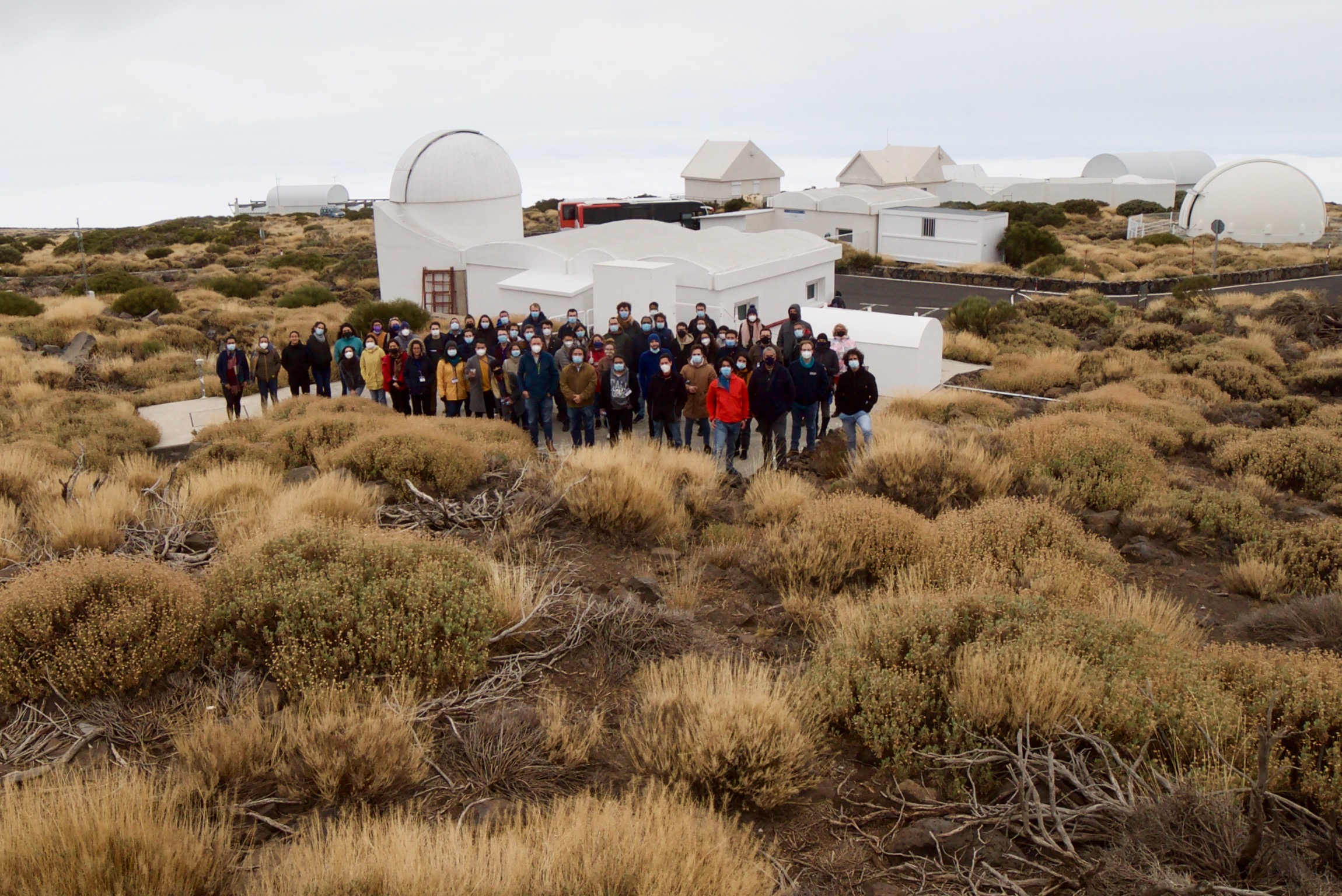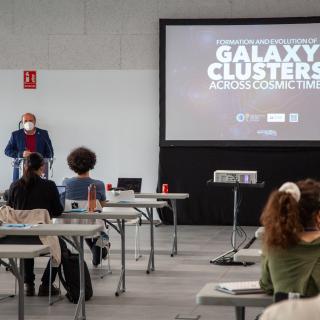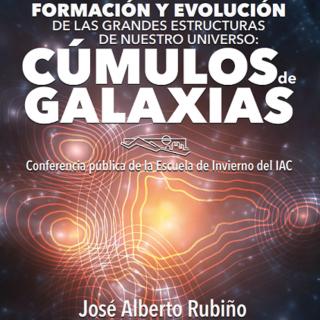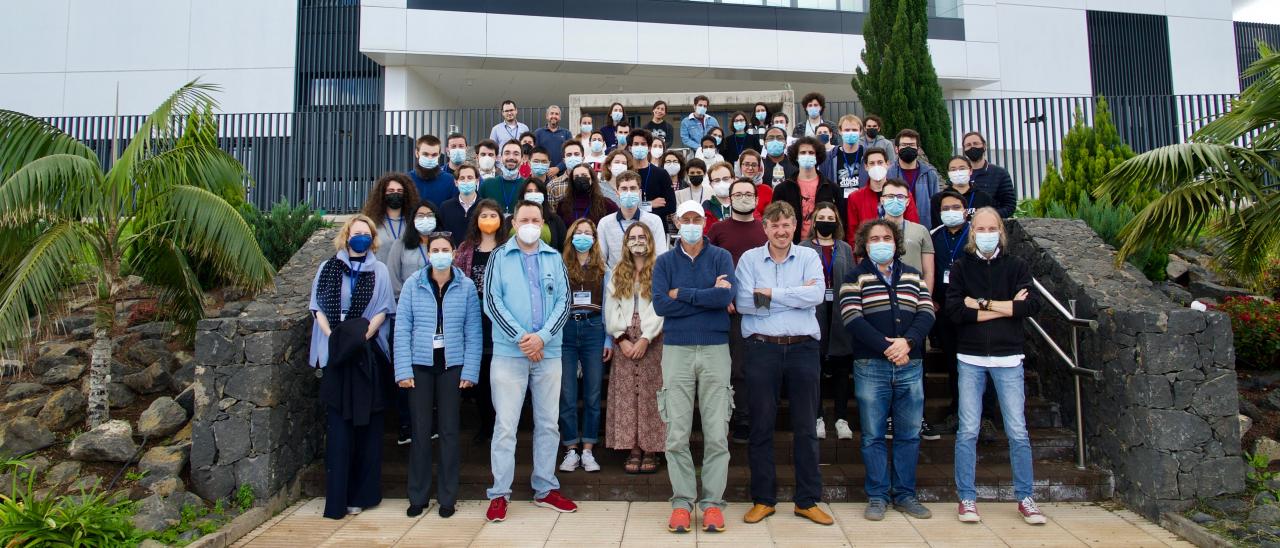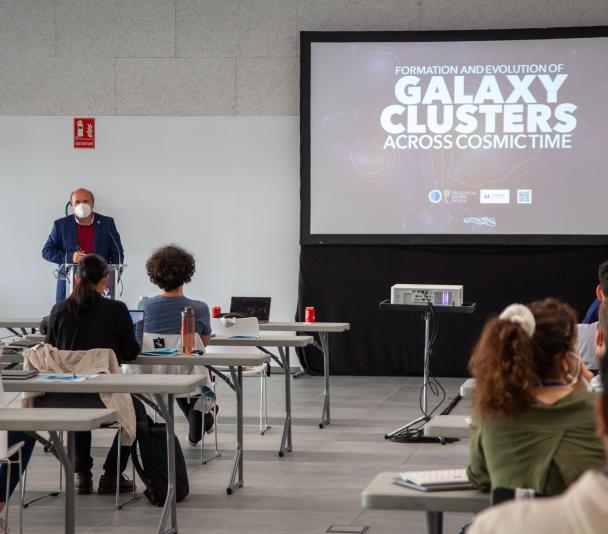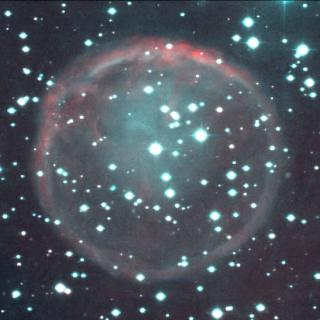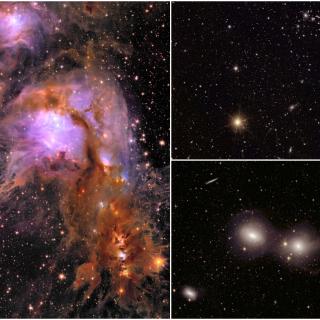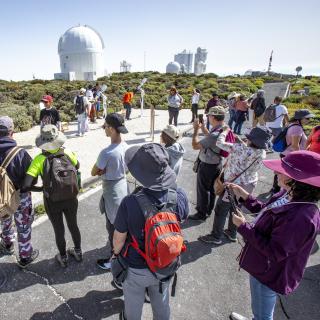65 doctoral students and postgraduate researchers from 15 different countries participated, for 9 days, in the XXXII Canary Islands Winter School of Astrophysics, which this year was focused on clusters of galaxies, the largest gravitationally bound structures that we can observe in the Universe. Of the full complement of students, 55 were present at the school, while the other 10 followed the course on internet. As well as being one fo the first astrophysics meetings celebrated internationally with students present, this edition of the IAC Winter School was noteworthy for the highest proportion of women until now; over 40% of the students and half the lecturers were women.
In this edition of the IAC Winter School, celebrated in the multiple use hall of IACTEC in La Laguna, there were some of the outstanding experts in the world on the study of the formation and evolution of galaxy clusters. By way of 6 courses and a tutorial the lecturers shared the most recent research in this field with the students, both observational studies, and studies using numerical simulations, and they covered some of the coming challenges and future projects in instrumentation and astronomical surveys, especially those in which the IAC is participating, such as the EUCLID mission of the European Space Agency (ESA), the WEAVE instrument, recently installed on the William Herschel Telescope (La Palma), and the LSST sky mapping project.
The students were impressed by the high quality of the lectures, well above their exectations, and above all the possibility of interacting personally with other researchers with a view to scientific collaborations. Many students noted that, due to the gap produced by the COVID-19 pandemic, this was the first conference they could attend personally. As well as seminars and practical classes there was also a poster session where the students could present their own work. As in previous years, the present edition included a number of complementary activities such as a dinner to closet he conference, a public outreach lectura at the Museum of Science and the Cosmos, and a guided tour to the Teide Observatory (OT). The visit to the Roque de los Muchachos Observatory (ORM) was cancelled due to weather, and instead the students enjoyed an excursion to outstanding tourist sites in the north of Tenerife.
The organizers of the school agreed that it had been a success; there had been a large numher of requests to participate, there was a high academic standard among those who came, there was a very good level of participation by women (over 40%) and there was wide international participation, (students at this Winter School came from 15 countries on 4 continents, including Brasil, Chile, Japan, and Canada). They also stressed the effort made by certain students in order to attend the School, because they had to pass mandatory quarantine when they return to their home countries. It is important to note that some of the students were able to participate in this school thanks to a special IAC fund which was used to pay scholarships covering travel, lodging, and disounts on the conference fee.
